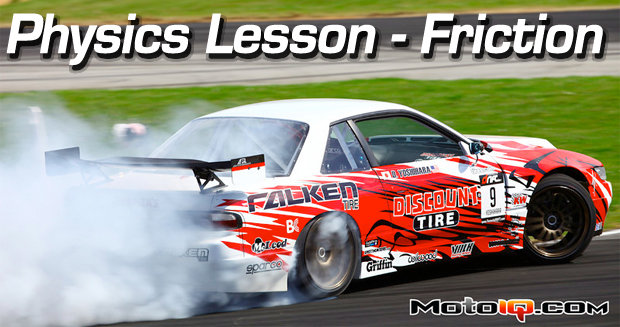,
As with most things in the world, nothing is quite that easy, clean-cut, or black and white. Tires and traction are a shade of grey. Depending on tire construction, tread pattern, rubber compound, road surface, and probably a couple other variables, the maximum coefficient of friction actually occurs with a little bit of wheel slip.
When it comes to tires and the road in particular, wheel slip can be defined as the relationship between rotational velocity of the tire and the velocity of the tire across the surface. If a tire has a circumference of 1m, spins at one revolution a second, and covers 1m in that one second, then there is 0% slip. Under braking, 100% slip occurs when the tire is locked up (zero rotation) and sliding across the road. If the tire made a half revolution (therefore traveling 0.5m in a no slip condition) while traveling a distance of 1m, that would be 50% slip. The maximum coefficient of friction during acceleration occurs when the tire spins a little faster than the corresponding forward velocity. Conversely for braking, the tire spins a little slower.
Chassis Handbook: Fundamentals, Driving Dynamics, Components, Mechatronics, Perspectives
 |
 |
 |
|
The top chart shows the phases of slip for a tire and the change in the coefficient of friction based on the percentage of slip. The second chart shows how the coefficient of friction under braking changes depending on vehicle speed and surface conditions. The third chart shows how much braking force can be applied based on the normal force applied to the tire. These charts show a maximum coefficient of friction somewhere between 10%-30% slip. I have seen other charts with the maximum value between 5%-10%. It just goes to show, there are many variables at play. These charts came from the book: Chassis Handbook: Fundamentals, Driving Dynamics, Components, Mechatronics, Perspectives Edited by Bernd Heißing, Metin Ersoy |
Two videos recently popped up on the internet that aptly demonstrate possible effects of too much wheelspin reducing the coefficient of friction therefore transitioning from static friction into kinetic friction. There's nothing better than real world examples to demonstrate the principles of physics and they conclude our lesson. Enjoy! (Oh yeah, math is cool, stay in school. Can I trademark that?)
Don't be stupid like these guys. Take it to the track!



